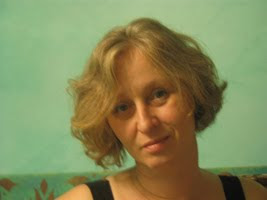 Cliff Fyman
Cliff Fyman Personally, I have witnessed ever since I was a young man studying in an orthodox yeshiva while interested in avant-garde poetry, that there is a resistance, perhaps a distrust, in the religious world I grew up in of people who choose to pursue full-time lives as artists and poets. I'm not sure what it's about, but I can definitely sense the attitude sometimes in the orthodox circles in which I move. So I've been used to seeing my observant friends in shul on Shabbos, and seeing my art and poetry friends during the week. But at the Jewish Art Salon, it's like one-stop shopping. It's wonderful. All of which is to say there's an increasing rise and acceptance of Jewish-identified and Torah-identified Jewish avant-garde artists, poets, musicians, and photographers many of whom meet once a month in various locations in New York City and who publish their writing in Mima'amakim magazine. I am thrilled to relate that I gave the very first poetry reading at the Jewish Art Salon on Aug. 11, 2010, and — G-d willing — may there be many more!
My poetry books include Nylon Sunlight. I'm currently at work expanding an early mimeo book, Stormy Heaven, which was once reviewed in the Poetry Project newsletter.
My poems are published in hard copy and online magazines. (Image: ©2004 David Haas.)
Tine Kindermann


The video A Night in the Old Marketplace is a collaboration with Israeli animator Mor Erlich, executed in Flash. It is edited to accompany a song written by Glen Berger (lyrics) and Frank London (music) for a new adaptation of I.L. Peretz' play Bay nakht oyn altn mark. The video will be featured at the Mima'amakim journal release event on Feb. 5, 2011.
Tine Kindermann is a German-born visual artist, living and working in New York City. Samples of her work can be seen at tinekindermann.com
 Robert Kirschbaum
Robert Kirschbaum The ancient Jewish Temple has been the subject of my art, in one form or another, for more than 30 years. From the outset, I fused this deep-felt symbol of redemption, repair and restoration with the language of abstraction I had cultivated well before I started to define the Jewish content of my art.
Concentrating on symbols derived from Kabbalah and early Jewish mysticism, I worked with the symbols of portal, gate and ark in a series of works, mostly between the late 70s and early 90s. In the 90s, influenced by research into sacred space I conducted in India, I turned to modeling a vision of the temple, and to imagining a perfected Temple Mount, with reference to Ezekiel.
But it was in 2005, following a fire in my New York studio – an event that brought back to me the trauma of 9-11 – that I turned to the Akedah as a means of reconciling these events while continuing to engage with the meta-history of the temple.
Part elegy, part affirmation, this series of very intimate works – most are very small and heavily worked – expanded my vision into the realm of symbolic narrative, and helped me renew and refresh my studio practice. (Photo: Steven Laschever)
The editors of Mima'amakim approached me about a year ago, asking to include my Akedah #54 in the then-forthcoming (now current) issue. I considered their request both a gift and an honor, since recognition – a fickle friend in any context – by this group of young literary and visual artists, themselves positioned on the cutting edge of Jewish culture, means as much – possibly more - to me, as I enter the latter stages of my career, than that which has come from more “establishment” sources in the past.
I have spent the better part of the last 20 years, in the hinterlands - as a “New Yorker-in-exile” – trying to convince the Jewish establishment in my community that Jewish culture is not just about the past, but rather that it is alive, with a vibrant present and, if we cultivate it, an ever-expansive future. Young artists who have taken the initiative, like those who have kept Mima'amakim viable, are leading us into that future. For that I thank them, and hope that in a small way, I have contributed something of value. (Akedah #54, 2009. Pigmented ink jet print, 36” x 32”.)

No comments:
Post a Comment